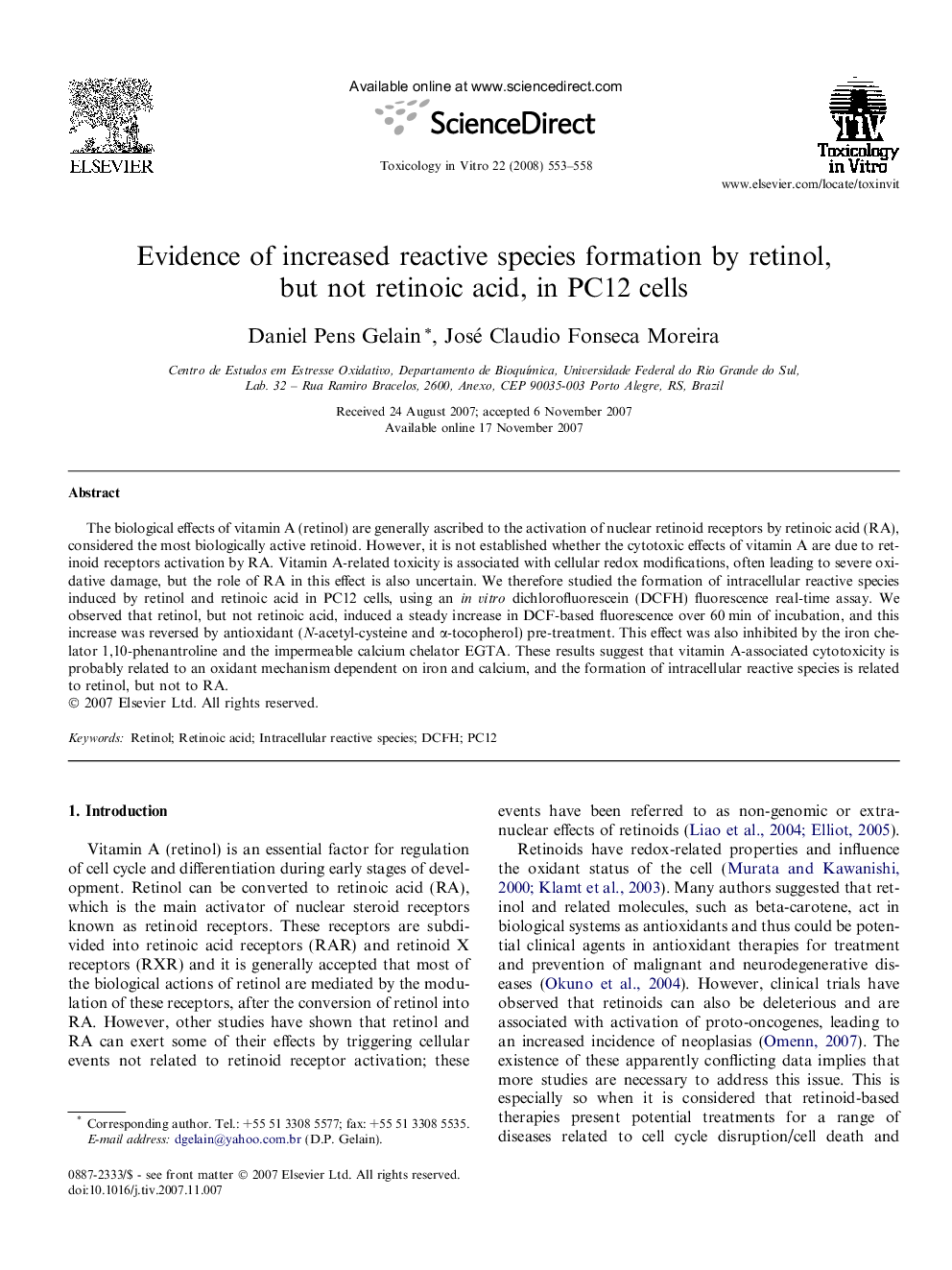| Article ID | Journal | Published Year | Pages | File Type |
|---|---|---|---|---|
| 2603412 | Toxicology in Vitro | 2008 | 6 Pages |
Abstract
The biological effects of vitamin A (retinol) are generally ascribed to the activation of nuclear retinoid receptors by retinoic acid (RA), considered the most biologically active retinoid. However, it is not established whether the cytotoxic effects of vitamin A are due to retinoid receptors activation by RA. Vitamin A-related toxicity is associated with cellular redox modifications, often leading to severe oxidative damage, but the role of RA in this effect is also uncertain. We therefore studied the formation of intracellular reactive species induced by retinol and retinoic acid in PC12 cells, using an in vitro dichlorofluorescein (DCFH) fluorescence real-time assay. We observed that retinol, but not retinoic acid, induced a steady increase in DCF-based fluorescence over 60 min of incubation, and this increase was reversed by antioxidant (N-acetyl-cysteine and α-tocopherol) pre-treatment. This effect was also inhibited by the iron chelator 1,10-phenantroline and the impermeable calcium chelator EGTA. These results suggest that vitamin A-associated cytotoxicity is probably related to an oxidant mechanism dependent on iron and calcium, and the formation of intracellular reactive species is related to retinol, but not to RA.
Keywords
Related Topics
Life Sciences
Environmental Science
Health, Toxicology and Mutagenesis
Authors
Daniel Pens Gelain, José Claudio Fonseca Moreira,
